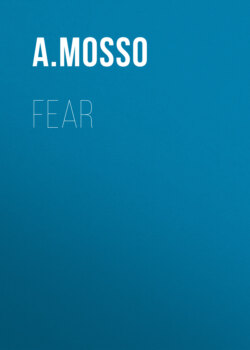Читать книгу Fear - A. Mosso - Страница 26
На сайте Литреса книга снята с продажи.
III
ОглавлениеTable of Contents
In order better to understand the working of the brain, we may divide it in imagination into two parts: a lower, situated at the base of the cerebral hemispheres, which forms the direct continuation of the spinal cord and is the centre of those movements which arise involuntarily during emotion; and another part in the upper story, as it were, which consists of the cerebral convolutions, is also in connection with the spinal cord, and must be considered as the seat of voluntary movement.
The enormous difference between the mind of a man and that of a child exists because in the latter the upper story of the brain is not developed, the convolutions are scarcely indicated, the organs of will and speech are wanting. As the large pyramidal cells appear and increase, the child acquires intelligence and speech; connections are established with the lower story in order to set muscles and organs which were before inactive into movement. But the difference between these two stories of nerve-centres continues during the whole life. I shall explain this by a few examples. A man is paralysed in consequence of some injury which prevents the upper story of his brain from communicating with the spinal cord. Hands and arms no longer move under the influence of the will, but when some long-expected person appears, or some sudden shock is given to the emotional sphere, he will be able to lift his arms. There is a paralysis of the facial nerve in which the voluntary closing of the eye is impossible, but if anyone makes a movement, as though he were going to poke his finger into the eye, the lid closes instantly. Later, we shall instance men who have remained dumb for a long time, and have regained their speech in consequence of a fright.
Dogs deprived of a large part of the upper story of the brain make no sign of recognition when they see themselves threatened by the whip, but if it is cracked they scamper off hurriedly, or rush forward at it. A mouse with its hemispheres and optic thalami removed remained undisturbed by every noise but that resembling an approaching cat, when it jumped and fled.
By means of injuries to the brain physiologists can easily check the activity of certain voluntary movements. If the peduncles of the cerebellum and certain points of the cerebrum are injured, dogs can be made to go either only to the right, or to the left, continually backwards, or in a circle, as though they were in a circus. The will of the animal is still in existence, but all his efforts are, as often with us, fruitless. In spite of himself his body is drawn in the direction determined by the lesion of the nerve-centres. Claude Bernard tells of a brave old general who, by a cruel irony of fate, could only march backwards.
Many physiologists have of late years tried to establish with precision the point of the brain which is the seat of emotional expressions; that is, that part, the destruction of which obliterates every expression of fear or pain in the animal, although allowing life to continue. One of the latest works published concerning this is by Bechterew. His observations show that a dog, in whose brain the corpora bigemina and quadrigemina have been destroyed, still barks and shows his teeth if anything loathsome is given him to eat, or if something smelling disagreeably is put before him; but that he is bereft of all expression of disgust and loathing after the two optic thalami have been removed. Hence Bechterew concludes that the paths of transmission along which pass the involuntary commands which cause the muscles to contract, in order to express the emotions, concentrate in the optic thalamus, which is one of the deepest parts of the brain. The upper story of volition and the lower of the emotions have here their point of union, whence to excite in the muscles of the organism all the characteristic movements of the passions.
